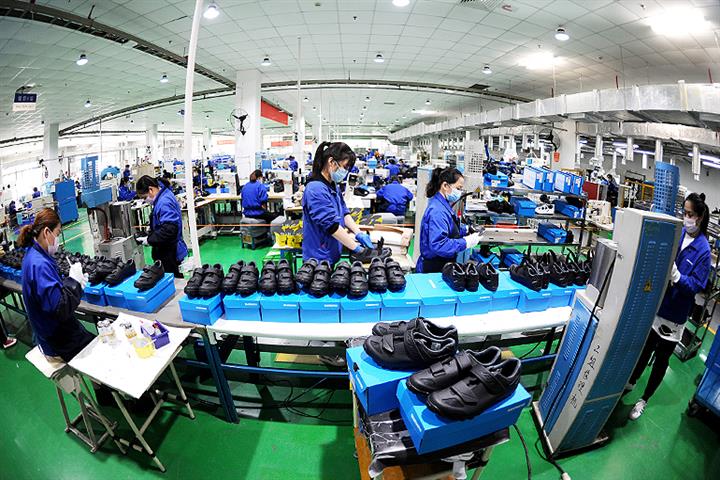 China’s Shoe Exports Swelled 35% Last Year, But Boom May Be Shortlived, Experts Say
China’s Shoe Exports Swelled 35% Last Year, But Boom May Be Shortlived, Experts Say(Yicai Global) Jan. 27 -- The value of China’s shoe exports jumped 35 percent last year from the year before, reversing a downward trend that started in 2014, as global orders flood back to the country amid the pandemic. However, unless Chinese shoemakers can become more competitive, orders are likely to flow out again after Covid-19 wanes, industry insiders said.
China exported USD51.7 billion worth of shoes last year, according to data from Wind Information. And the nation sold 17.5 percent more footwear overseas in 2021 than the year before at 8.7 billion pairs, although this was still lower than the 9.5 billion pairs in 2019, according to the General Administration of Customs.
The huge rebound in shoe orders is due to recovering consumer demand in developed Western countries. Orders are being diverted to China as production in some Southeast Asian countries, such as Vietnam and Indonesia, is down due to novel coronavirus control measures.
Vietnam’s shoe exports dived last year. Shoe exports between August and October 2021 came to around USD850 million a month, less than half the USD1.75 billion exported in July, according to Shanghai-based Wind.
But the boom won’t last long, the experts say. Shoe and apparel orders that have flowed into China during the pandemic will flow out again once the pandemic ends due to a lack of cost advantages, said Zhou Liang, partner of Ernst & Young Consulting Services.
Chinese shoemakers must improve their competitiveness through brand innovation and smart production to tackle a possible drop in orders, industry insiders told Yicai Global.
Businesses in Southeast Asia are getting back to normal as more people are vaccinated and as the pandemic comes under control. Huali Industrial Group’s employees at its Vietnamese plants have started to receive their third dose of the Covid-19 vaccine and the factories have resumed production.
Huali, which counts US sports giant Nike among its clients, plans to hike capacity at its Vietnamese plants and also to build new ones as the prospects there are good, a manager said.
Long-Term Goals
Chinese companies must pay more attention to product innovation in the future because China’s manufacturing and supply chain capacities are stronger than other countries, said Cindy Tai, vice president of US e-commerce giant Amazon.
Companies must not only focus on short-term sales but also be determined to make long-term investments such as in brand building and to have longer-term goals, Tai said.
Improving production and management techniques can help China’s manufacturing industry increase efficiency and make up for its lost advantages in labor costs and taxes, Zhou Liang said.
“Many large Chinese firms have digitalized their entire production process, said Yang Jun, head of seller expansion in the Asian-Pacific region for Amazon Global Selling and Amazon Business. Each spare part can be tracked from the factory to the product and all goods stored in warehouses as well as other product information is cloud-based.
“I have been keeping a close eye on China’s manufacturing sector and supply chains and although there are big concerns about the production and labor costs, I feel confident about the future,” Yang said.
Editors: Tang Shihua, Kim Taylor